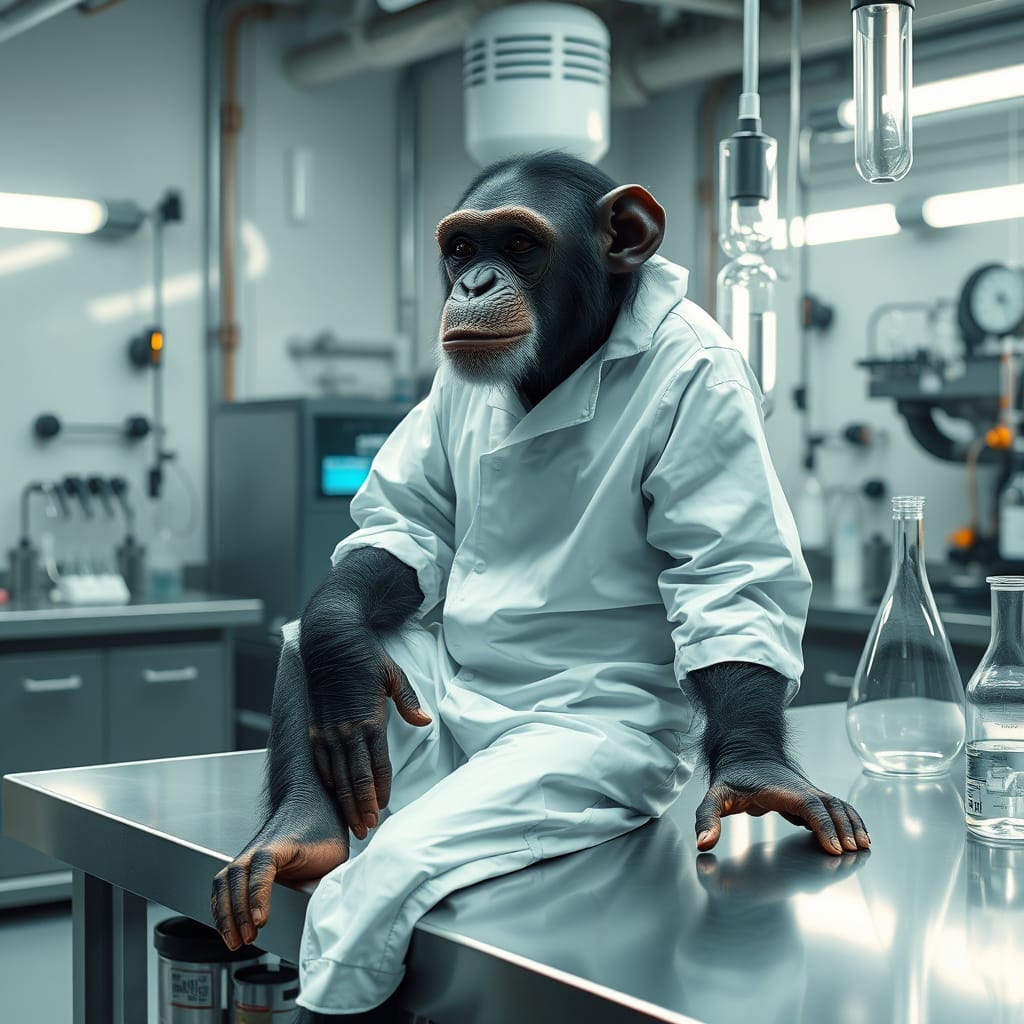On the Curious Matter of Our Closest Relatives – Or, Do I Look Like A Chimpanzee?
There is a certain brand of forensic investigation that takes place at family gatherings.
Great-Aunt Carol, perhaps, peering at a newborn cousin and declaring with absolute authority, “He has your grandfather’s ears, but that stubborn chin is all your mother.” We are fascinated by this mixing and matching, this genetic lottery that picks a nose from one branch of the family tree and a temperament from another.
This same curiosity, writ large, sometimes drifts toward our nearest biological neighbors: the chimpanzees. Given that we share something in the neighborhood of 98.8% of our DNA, the mind, in its quieter and more speculative moments, can’t help but wonder. Could the branches of our two family trees, separated by some six million years, ever be grafted back together?
The short answer is no, and the reasons are as much about cold, hard biological accounting as they are about the kind of profound ethical awkwardness we’d rather not contemplate.
A Matter of Accounting
Nature, for all its wild creativity, is a stickler for the rules, especially when it comes to cellular division. Think of genetics less as a soulful poem about ancestry and more as a meticulous, and rather unforgiving, form of bookkeeping. The primary issue here is a simple, non-negotiable numbers problem.
Humans have 23 pairs of chromosomes, for a grand total of 46.
Chimpanzees have 24 pairs, totaling 48.
During the formation of sperm and egg cells, these pairs split. A human cell gets 23 chromosomes; a chimp cell gets 24. For a viable embryo to form, these have to line up and pair off correctly. But with a human-chimp pairing, one chromosome would be left standing alone on the dance floor, with no partner. The entire intricate choreography of cell division would collapse. It’s like trying to zip a jacket with two different sets of teeth; it will snag and buckle almost immediately.
Genetics, it seems, can be a rather unsentimental courier. While we see a profound and moving kinship, it sees a fatal accounting error and returns the package to sender. Even in far more closely related species, like horses and donkeys, creating a hybrid is a biological struggle. The resulting mule, a testament to this chromosomal mismatch, is almost always sterile—a beautiful, hardworking, but ultimately biological cul-de-sac. The genetic gap between human and chimp is vastly greater.
A Question Best Left Unasked
Let us, for a moment, suspend our disbelief and imagine that some mad scientist in a volcano lair managed to bypass the biological roadblocks. We would then immediately slam into a wall of ethics so immense it would make the genetic problem look like a minor inconvenience.
The true challenge isn't one of can we, but the deafening silence that follows the question, should we? To create such a being would be to engineer a creature for a life of profound and singular confusion.
It would be an act of staggering hubris, a meddling in the cosmic filing system with no thought to the file itself.






